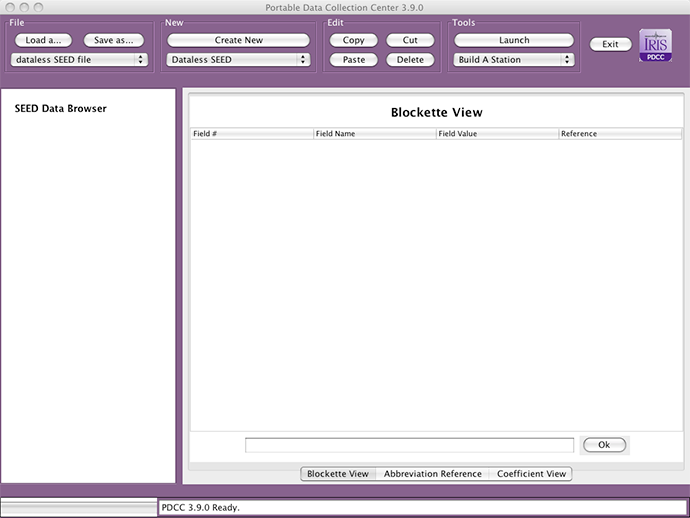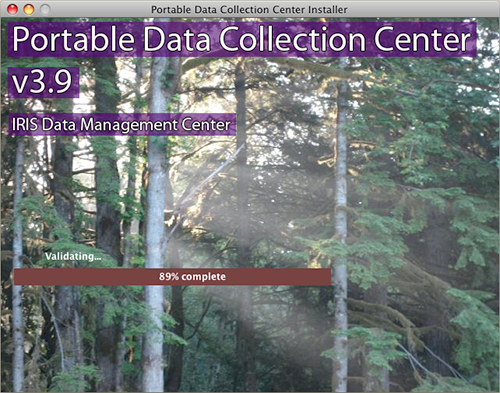Portable Data Collection Center v3.9 – Same But Different
PDCC is a tool that allows network operators to create the metadata that describes seismic networks and output it as a dataless SEED volume. PDCC v3.9 will see release early 2013 and will largely be the same tool you have come to know and love. There are three things you should know about this new release that may be of interest to you.

1. Getdown for Updates

For the first time, PDCC users will enjoy the convenience of seamless updates to PDCC over the network. Every time we fix a bug, add a tool, or improve features in PDCC, you will be able to easily gain access to this update at the point you launch the software. The Getdown updater, created by Three Rings Design and released to the open source community, allows users to download a lightweight installer that will detect changes in the download server folder and install the updated contents to the user’s machine. Content created by users should not be affected by the updates, as the system is designed to only replace and add files related to the software, never to delete. Final work is underway to handle the auto-update procedures smoothly. This means that posting fixes for those annoying bugs should be a more lightweight process going forward, as opposed to necessitating a complete reinstall of the software.
2. PDCC meets Jython
Still in the early stages, development has been underway to support command-line capabilities with PDCC. Owning to the fact that PDCC runs on a JVM and that many users in the scientific community have come to appreciate the power and versatility of the Python language, the choice was made to design a command line core of PDCC in the Jython scripting environment.
Much of the PDCC application data model has been duplicated in Jython, enabling facilities such as station cloning, to be performed in a batch-oriented fashion. The modes of input are still being worked on, but one that was favored early on is a document-oriented approach, using an Excel spreadsheet as a form of command and data control to drive automated PDCC operations. Users will soon be able to specify stations as documents, and even clone new ones from existing ones, using a simple spreadsheet form.
Because Jython is an interactive environment, it follows that an interactive command line for PDCC is in order. This will be constructed into the Jython code base as well, allowing much of the same functionality as can be found in the current UI. Building up this base has taken time, so it won’t be very mature at the time of v3.9’s initial release. Fortunately, with automatic updates, you’ll find these changes making an appearance automatically as we progress into the new year.
3. Legacy Dataless Verification
There has long been the desire to have a way to have PDCC run a verification test on the dataless information that is created. A new tool will be added that runs IRIS’s venerable verseed utility in the JVM. You just point it at a dataless SEED file and it will provide you feedback in terms of what information seems incorrect, incomplete, or out of place. This tool can be useful as a final step of verifying how well your dataless is constructed before sharing it with others. You can expect to be able to launch this from the Tools menu in the UI in version 3.9.
by Rob Casey (IRIS Data Management Center)






